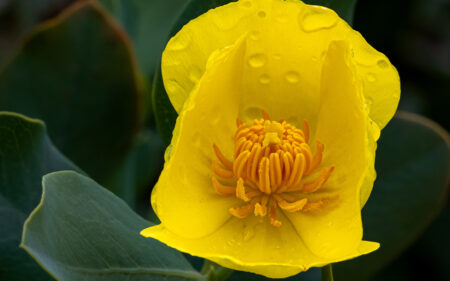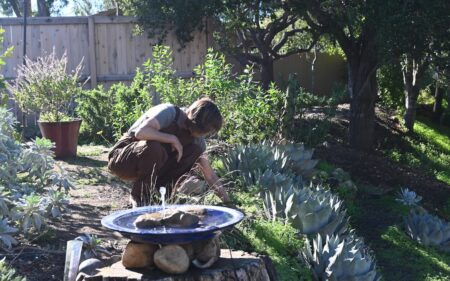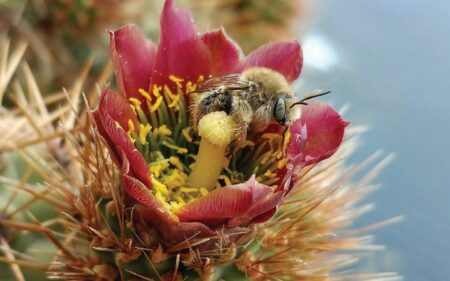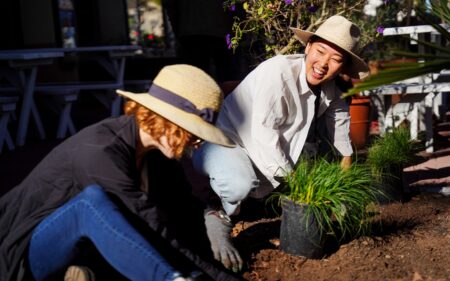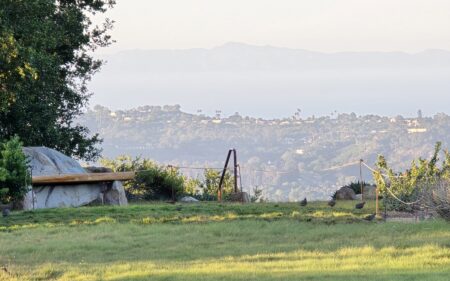Companion Planting: Your Veggies Need a Little Help from Their Friends
Are you ready for a sensory experience? Clear your mind and think about the vegetable garden you’d love to have come summer. The smell of tomato leaves and the sticky feeling you get on your hands as you reach through the plant to collect handfuls of ripe, sweet cherry tomatoes. Now walk down your garden path, past your productive squash and broccoli, colorful peppers, and plump strawberries. At the corner of your veggie patch, your bush sunflower sways in the breeze as you investigate the bustling of bees, running from flower to flower on California buckwheat. Then, you notice the familiar silhouette of a manzanita, watching over the garden, with its flower buds already set to bloom next spring.
This productive garden can be yours and it begins with unlocking the power of native plants to create a pollinator’s paradise.
When people think of pollinators, they usually think of the European honeybee, that was introduced in North America in 1622. Today, they are an important player in commercial agriculture, but our native pollinators are also huge contributors – and they do a lot of work in our backyard gardens as well. What makes our native bees so great? Compared to a European honeybee, a native bee is often more efficient. For one, they aren’t as put off by cold or damp weather. So, come June gloom, they are still hard at work on those brisk foggy mornings. A native bee also tends to stay closer to home and visits a higher diversity of flowers throughout the day. This means, if native bees are nested near your vegetable garden, they are more likely to work on pollinating your fruit trees and vegetables without getting too distracted by something sweet blooming down the street.
Bumblebees are also vital to productive gardens. They have a special trick that they have evolved called “buzz pollination.” The bumblebee hangs onto “upside-down” flowers like those of manzanita or tomato. When they have a firm grasp on the flower, they give their body a little buzz which shakes the flower to release pollen thus pollinating the flower in the process. This action translates over to other upside-down flowers seen in other members of the Manzanita plant family Ericaceae (blueberries) and Solanaceae (tomatoes, peppers, and eggplant).
Beyond the bees, many other beneficial bugs can come to your garden’s defense. Many of these, like lacewings, for example, have complex lives. At one life stage lacewings are vigilante caterpillar-like larvae, mowing through aphids and other pests. Then, through a dramatic transformation, they emerge from a pupa as delicate adults that rely on nectar sources to feed before laying their eggs.


What do you need to do to tap the resources of our native bees and other beneficial insects? Plant native habitat – and the best time is in the fall and winter. So, here are a few tips to attract and maintain a fleet of “good bugs” to help you in your gardening come spring.
• Plant native flowers for all seasons. The goal would be to have something native in bloom nearly year round. A simple combination that covers a wide range of the year would be to include these five natives in your garden: manzanita (Arctostaphylos spp.), California lilac (Ceanothus spp.), bush sunflowers (Encelia californica), buckwheat (Eriogonum spp.) and coyote bush (Baccharis pilularis). Of course, adding more species or substituting for other native flowers that you enjoy can contribute towards the same goal.
• Plant more than one. A large ceanothus can be a buffet for many bees. However, when it comes to forbs, perennials, and smaller shrubs, you’ll want to up your numbers. A patch can feed more workers and help beneficial bugs find what they are looking for. On top of this being a tip for attracting good bugs, this is also a great design tip for your enjoyment. Larger sweeps of color and texture can help to relax the eye and give a garden a cohesive look.
• Enhance habitat with complexity. Vertical layers of vegetation make more microhabitats. With more available habitats, you can attract and retain a wider range of insects and wildlife. Think about your garden in three dimensions and fill the space with plants.
• Leave some dirt and debris. In addition to food and spots to hang out, native pollinators need nesting sites – and they love the dirt and leaf litter. Nearly three quarters of native bee species are ground-nesting and require exposed rocks and soil for refuge. Leave a portion of your garden un-mulched. Some plants like annual wildflowers and narrow-leaf milkweed will appreciate bare soil for germinating seedlings as well. Leaf debris also makes a great spot for some of your good bugs to hide or live in through their transitionary life stages.
• Be judicious with spraying and applying pesticides. Sometimes invasive insects or plant diseases call for action. If you find the need to apply, always read labels to make an informed decision. To minimize risk to good bugs, try to choose a spray that has a physical mode of action like soaps or horticultural oils.
• Participate in observing life around you. Whether you’re a vegetable gardener or not, you can participate in producing data about the natural world. Download iNaturalist and start taking photos of the bugs you see. Once in iNaturalist, these datasets can be accessed by researchers, like those at The Garden, who want to better understand where these bugs are and how they interact with the plants in your gardens and wildlands.

 Donate
Donate
